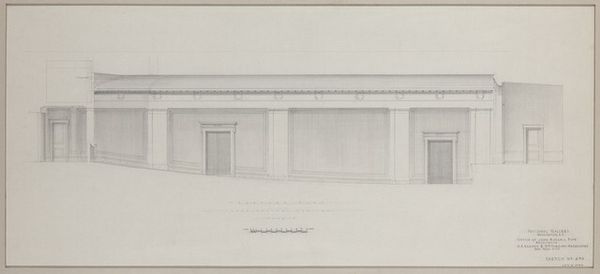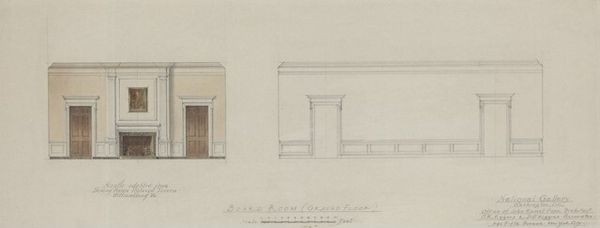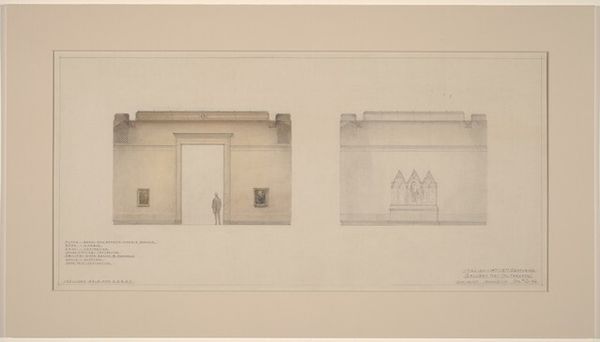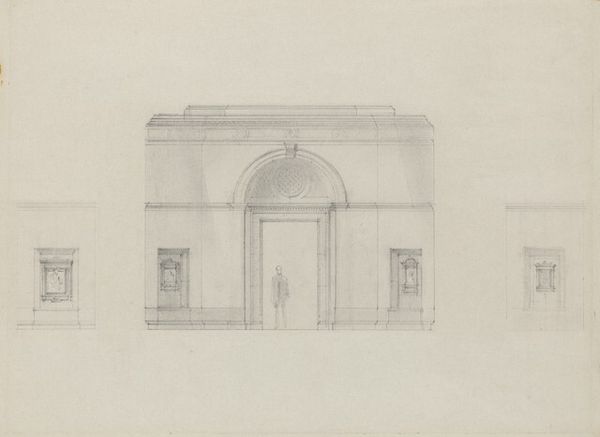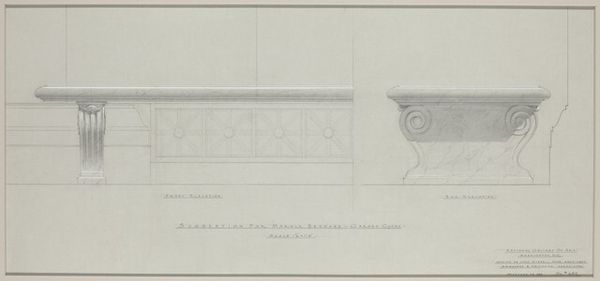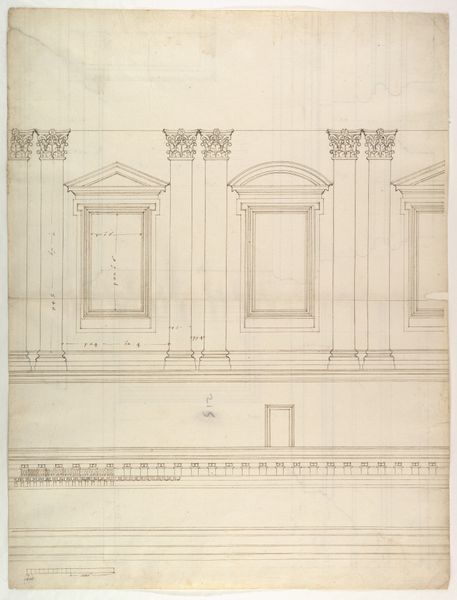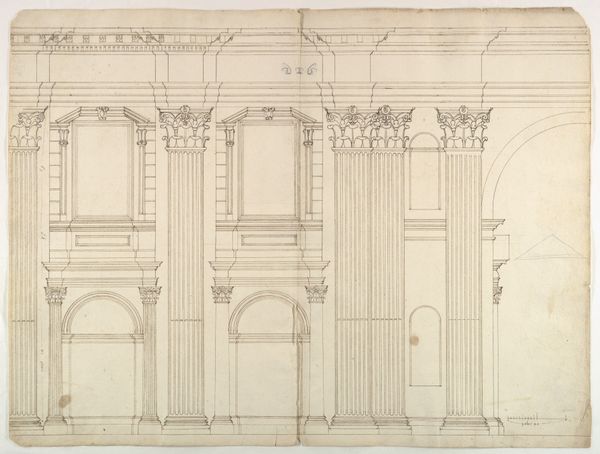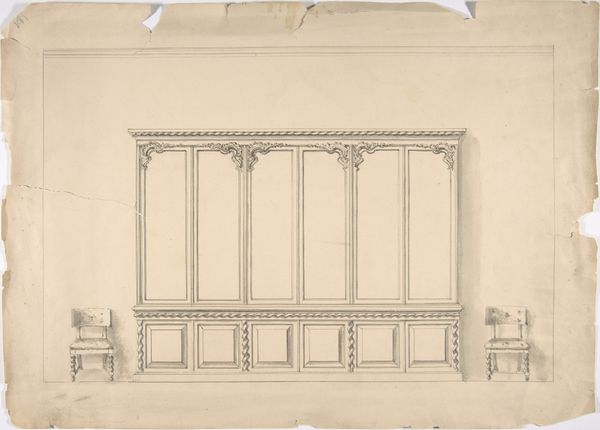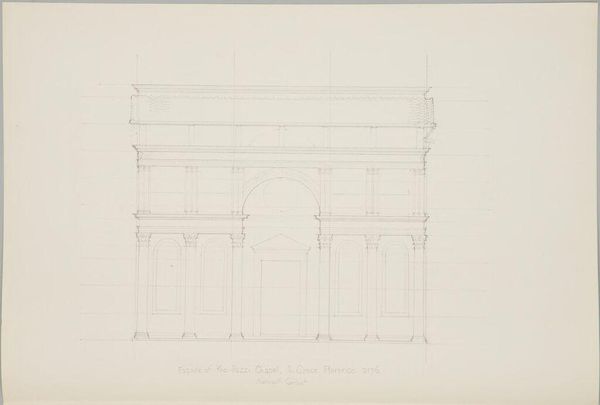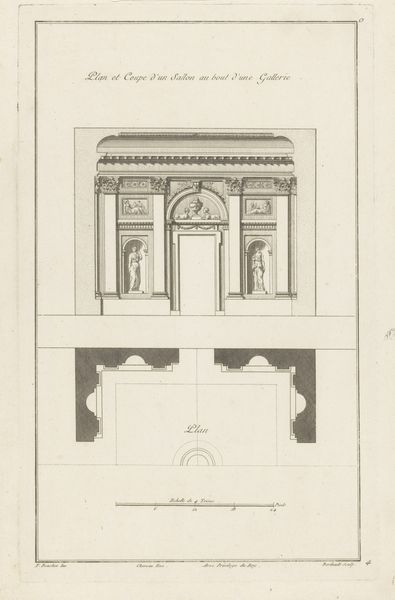
Dimensions: sight size: 24 x 63.5 cm (9 7/16 x 25 in.)
Copyright: National Gallery of Art: CC0 1.0
Curator: Welcome! We're here to discuss "Sculpture Galleries 11, 12, 16," a 1939 drawing by Eggers and Higgins. It presents an elevation view of three gallery spaces. Editor: My initial impression is of quietude. The composition, primarily pale pencil on paper, evokes a sense of order and serenity. It's very symmetrical, very planned. Curator: The drawing embodies the Neoclassical style. The clean lines, the symmetry, the domed structures, and even the sculptures positioned within—they all speak to a cultural memory steeped in Roman ideals. You see the pursuit of rationality, the idealized form. Editor: Yes, that formal perfection is key here. Notice how the repeating geometric forms—the arches, rectangles, the imposing domes—create a rhythmic pattern across the three galleries. The drawing operates almost as a musical score, each section contributing to a harmonious whole. Curator: The figures included, though small, add an important psychological dimension. They act almost as stand-ins, proxies. Placed facing sculptures, facing doorways, looking forward, they’re a deliberate addition to signify what is sacred in civilization and culture. They invite the viewer in and activate our response to the structures they are a part of. Editor: The stark contrast between the light-filled doorways and the more shadowed walls creates depth, drawing our eye through the architectural forms. This use of light and shadow highlights the texture and materiality of the stone, rendering the building substantial. Curator: Indeed. The building plan becomes a monument. Eggers and Higgins sought to construct an image of eternal principles in built form. Even now, looking at the drawing 80 years later, it still gives off the message. Editor: Ultimately, the drawing communicates not just the appearance but the very essence of Neoclassical architectural aspirations, its core belief in harmony, balance, and order, using a relatively simple medium to represent quite an enduring structure and statement. Curator: An eloquent testament, I would say, to the ability of architecture, whether real or representational, to act as a touchstone, connecting us to our cultural heritage and to the values we choose to enshrine. Editor: Yes, it allows us a considered, structural look, so to speak. Thank you.
Comments
No comments
Be the first to comment and join the conversation on the ultimate creative platform.

